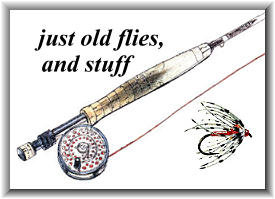Fireflies have a poisonous substance in their
blood stream that acts as a defense mechanism
to protect them from predators. When the firefly
gets excited it "bleeds" droplets of blood containing
the poison which predators sense and they then avoid
the firefly. It appears that animals that evolved
where these poisonous fireflies live have developed
a genetic aversion to the smell of the poison.
Early on we knew birds and spiders would leave
fireflies alone but only lately after several
non-native species ate fireflies and died did
they realize why native predators showed this
avoidance response.
One firefly has killed a 30 pound iguana. Certain
species don't manufacture the poison but get it by
mimicking a female of the species and eating the
male when it arrives. Lizards and frogs from
Australia are especially vulnerable. I would
imagine trout would display this avoidance response
but I could find no mention of this in the literature.
I would gamble that those firefly imitations are
not being taken by fish as a firefly. Squeeze
several fireflies and drop them in the water
upstream of a hatch and tell me if trout continue
to rise. Don't tell me if you gave your honey
chocolate covered fireflies last night. ~ old rupe
Note: See the Cornell researchers report
in the Proceedings of the National Academy of
Sciences (Sept. 2, 1997, Vol. 94, pp. 9723-9728),
or search the internet under lucibufagins and Cornell.
|



